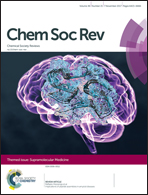Spatiotemporal hydrogel biomaterials for regenerative medicine
Abstract
Hydrogels mimic many of the physical properties of soft tissue and are widely used biomaterials for tissue engineering and regenerative medicine. Synthetic hydrogels have been developed to recapitulate many of the healthy and diseased states of native tissues and can be used as a cell scaffold to study the effect of matricellular interactions in vitro. However, these matrices often fail to capture the dynamic and heterogenous nature of the in vivo environment, which varies spatially and during events such as development and disease. To address this deficiency, a variety of manufacturing and processing techniques are being adapted to the biomaterials setting. Among these, photochemistry is particularly well suited because these reactions can be performed in precise three-dimensional space and at specific moments in time. This spatiotemporal control over chemical reactions can also be performed over a range of cell- and tissue-relevant length scales with reactions that proceed efficiently and harmlessly at ambient conditions. This review will focus on the use of photochemical reactions to create dynamic hydrogel environments, and how these dynamic environments are being used to investigate and direct cell behavior.

- This article is part of the themed collections: Celebrating Excellence in Research: 100 Women of Chemistry and Supramolecular Medicine


 Please wait while we load your content...
Please wait while we load your content...